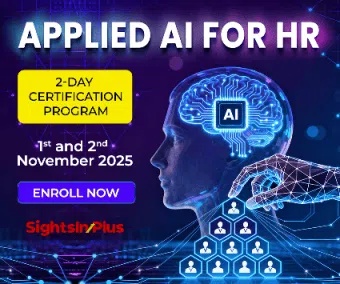Goldman Sachs is preparing for another round of job cuts as part of its broader strategy to integrate artificial intelligence into core operations and streamline costs.
The move, revealed through an internal memo, is part of the firm’s “OneGS 3.0” transformation initiative, which aims to modernize workflows, improve efficiency, and position the bank for long-term growth.
Goldman Sachs AI Integration Drives Operational Shift
The Wall Street giant is increasingly investing in AI to automate functions such as sales, client onboarding, and internal support services.
According to the memo shared with employees, the bank is focusing on using AI to enhance productivity and reduce manual processes.
This shift is expected to reduce the need for certain roles, particularly in back-office and support functions.
The memo, signed by CEO David Solomon, President John Waldron, and CFO Denis Coleman, emphasized that the firm is working on a “limited reduction in roles across the firm.”
While the exact number of affected positions has not been disclosed, the language suggests a targeted approach rather than a sweeping layoff.
Headcount Growth to Slow, Not Reverse
Despite the planned cuts, Goldman Sachs clarified that it still expects to end 2025 with a net increase in total headcount.
As of September 30, 2025, the bank employed approximately 48,300 people globally—about 1,800 more than at the end of the previous year.
The firm said it would “constrain headcount growth through the end of the year,” signaling a slowdown in hiring rather than a hiring freeze.
This approach reflects a balancing act: leveraging AI to improve efficiency while continuing to invest in talent for high-growth areas such as technology, risk management, and client advisory services.
Cost-Cutting Amid Record Profits
The decision to reduce roles comes even as Goldman Sachs reports strong financial performance.
The firm has posted record profits in recent quarters, driven by robust investment banking and asset management revenues.
However, executives have emphasized the need to remain disciplined on costs, especially as the financial industry faces margin pressures and increased competition from fintech players.
Goldman Sachs designed the OneGS 3.0 strategy to align its operations with its long-term vision, which includes relying more on digital tools and data-driven decision-making.
AI will play a central role in this evolution, enabling faster execution, better client insights, and reduced operational overhead.
Note: We are also on WhatsApp, LinkedIn, and YouTube to get the latest news updates. Subscribe to our Channels. WhatsApp– Click Here, YouTube – Click Here, and LinkedIn– Click Here.



